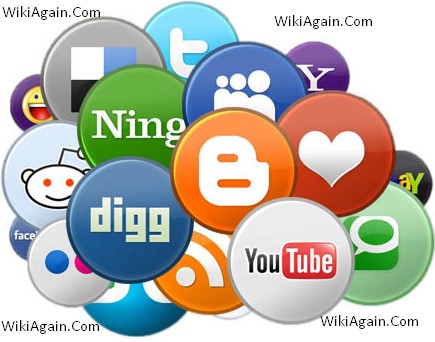Welcome to the part 9 of traffic generation.
If you do not read the old post, then read now. All part link of this post:
1. Successful Traffic Generation Plan – website traffic generation part 1
2. Seo Keyword and content optimization – website traffic generation part 2
3. Blog and Article Directory Marketing – website traffic generation part 3
4. Social Networking – website traffic generation part 4
5. Social media marketing – website traffic generation part 5
6. Email marketing – website traffic generation part 6
7. Creating Newsletters – website traffic generation part 7
8. video and audio content – website traffic generation part 8
9. Social Bookmarking – website traffic generation part 9
10. PPC Advertising – website traffic generation part 10
Social Bookmarking
Next, consider the topic of social bookmarking, a new trend in web surfing that is the
link equivalent to file sharing—an application that allows you to share website links and
website content, and also organize it, store it, manage it and search for similar content.
This form of social bookmarking, also called tagging, can help users search for niche
content all over the web and promote themselves, as well as others. It is similar to a
social network, as far as sharing goes, but is more focused on promoting good text
pages than merely interacting with others.
Descriptions are added along with bookmarks via metadata, so that context is
immediately understood upon loading the link. Users can also comment on the content,
vote on the subject, or vote on the quality of the article. Some sites even allow you to
keep track of all changes and statistics, including how their bookmarks are shared and
tagged by others. Bookmarks can also be emailed integrated with social networking.
Some of the top social bookmarking sites include Delicious, Digg, Reddit and
StumbleUpon. These are excellent traffic boosters as they can help you to go “viral”.
They are also content-centric, meaning they are less concerned with images, and more
concerned with articles of high caliber and of unique content.
You can submit your own writings to such sites to consider, but ideally, (and just like with
all the Web 2.0 applications we have been discussing) you want to help promote other
people’s content as well. Don’t blindly recommend things as a chore. Help to promote
content that you believe in—ideas your company can stand behind.
What is the most common reason why articles fail to go viral on these sites (which are
meant to draw huge traffic to individual web pages)?
It is usually because:
· The content just isn’t that unique or interesting;
· Content is good but the information is too obscure;
· The content is good but the headline is not catchy enough to draw in readers;
· Description does not highlight the material as a must read;
· Bad formatting (i.e. long paragraphs) or a boring introduction;
· A bad choice of keywords;
· You haven’t made it easy for people to bookmark your site;
· You’re submitting on a bad schedule. (Usually, your content will only give you a
headline or front page coverage for 24 hours) The best time to submit a link or
an article is later than 10 AM central time, and as late as 3 PM central time.
Beyond or before this, the competition may be too great;
· Improper categorization;
· No profile (Maybe it won’t hurt your traffic…but what a waste if you can’t direct all
that traffic to your site!);
· Not reaching out to the community and joining a network of friends (like social
networking, social bookmarking is a waste if you don’t want to go out comment,
promote and interact with others);
Finally, consider that social bookmarking and having a text page for “viral” can often
times be a deceptively easy task to accomplish. Many webmasters are excited to see
when a story receives thousands of hits in a day. However, if he doesn’t capitalize on
that success with a series of similar topics, all that traffic is just going to drop. It will be
15 minutes or fame. So decide if you want just 15 minutes or hours and hours in the
spotlight!
Applications, Games, Tools and Other Multimedia
If you’re all out of text and picture ideas, or perhaps you just want to diversify your viral
strategy then think about a developmental approach—creating applications, games
tools and other multimedia projects exclusively for your customers. This yet another
form of incentive and many, many companies are willing to invest hundreds or even
thousands of dollars in creating a tool that will be useful to their customers.
After all, if you host this tool on your own site, your customers will flock to it, wanting to
use the tool. Along the way, they will see your brand, your web design and your prices
and may be convinced to give your company a try. Giving just a little bit extra upfront is
a great way to recruit interest.
You’re probably thinking… “That sounds all well and good…but I am not a programmer!”
Of course you’re not. Most of us aren’t…but that doesn’t mean you can’t outsource the
job to a programmer or perhaps even download a public domain tool that you can install
on your own site and brand with your own name. This is truly outside the box thinking,
as it can cater to the short-attention span of many Internet viewers, or capitalize directly
on their stated need. (i.e. someone is looking for a calculator made just for home
financing…and bingo, they find your tool. )
The Secret to Creating Viral Pages
Lastly, we come to the secret of creating viral pages. The only secrets are consistency,
and having a pulse on what the world is thinking…a few days early. You have to be
consistent, because for every page you create that does go viral, you will have many
others that never find a massive audience. Keep sending them out there on a regular
basis and do your research. That way, you will know what “type” of content grabs hits,
and thus what type of future projects you should be planning.
It also helps to read up on the news as to what is happening around the web, including
viral sensations, as well as general interest news. Understanding what the world is
thinking about, looking at, and how they’re laughing it up at the moment, is always a
good thing to remember for when you create content of your own.
It is definitely recommended that you make time to develop viral content because this is
a great way to boost traffic without having to pay.
In our final chapter, we are going to consider some other great and not so great ideas
that might be free to low cost. Of course, we’re pushing the “free” in this book so just be
warned…
A Few More Great and Not So Great Ideas
We’ve discussed the best ideas when it comes to free traffic generation, SEO, social
networking, viral content and email marketing. Now we’re going to consider some other
avenues that might work well for your business—depending of course on the business
model and on your strategy. Remember, you’re looking for free here…and really, free is
the best to do, as all of the most effective methods we covered are free.
So the idea of paying for traffic, or paying for impressions, is not a great one—unless
you can afford it, and unless you can develop a budget and a strategy to make it worth
your investment.
Banner Advertising
Take banner advertising for instance. Usually, this involves paying a website to host
your banner ad, and when a user clicks on it, he or she is directed back to your site.
This is the relatively cheap cyber equivalent of a commercial—something that’s
relatively targeted (at least in demographical information; i.e. advertising baby products
on a site that caters to new moms) but still not as targeted as search engine traffic—
which actually penetrated the user’s mind, and uses the same keywords he or she is
thinking.
Of course,
banner advertising does not have to be paid advertising. Here’s an idea:
create multiple sites (but do NOT duplicate content) and then place banner ads taking
your users from one site to the next. Or, you could barter with other websites in
exchange for a banner ad. Banner ads don’t really count in estimating overall links (the
stuff that gets you high ranked), at least not to the extent that organic SEO links can.
However, if you have an artistic or commercial design skill, you may find it useful to go
ahead and create a banner ad using fancy font text (still appropriate to your site theme)
or other decorative shapes or objects. In general, avoid GIF animation, and opt instead
for Flash or another dynamic technology. Of course, some users hate flashing banners
altogether, regardless of technology. Keep banners simple and make sure you convey
a message…not merely an attitude or a thought that leads nowhere.

There are “standards” of banner sizes to consider. Here are standard sizes to choose
from:
468 x 60 Full Banner
728 x 90 Leaderboard
336 x 280 Square
300 x 250 Square
250 x 250 Square
160 x 600 Skyscraper
120 x 600 Skyscraper
120 x 240 Small Skyscraper
240 x 400 Fat Skyscraper
234 x 60 Half Banner
180 x 150 Rectangle
125 x 125 Square Button
120 x 90 Button
120 x 60 Button
88 x 31 Button
In addition to trading banners with other companies, networks or search directories, you
can also set up banners for affiliate network opportunities or even for self promotion. So
yes, it is a smart idea to create a banner now before you suddenly find out that you
need one and have nothing in the works!







